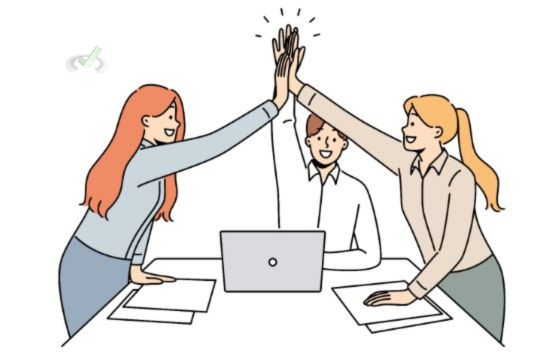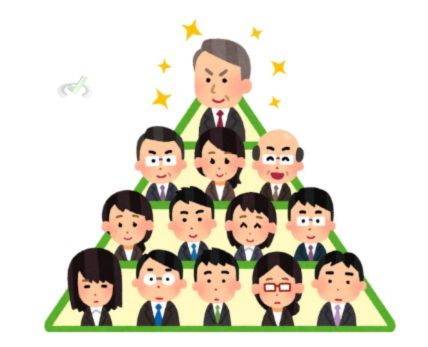Humans are social creatures, and our social behavior has deep evolutionary roots. Understanding the evolutionary benefits of social behavior helps us see why we act the way we do in groups and why these behaviors are crucial for survival and success. Let's explore these benefits and how they shape our lives.
I. Understanding Social Behavior in Evolution
Social behavior refers to interactions among individuals, typically within the same species. These interactions can include cooperation, competition, communication, and mating. In evolutionary terms, social behavior offers several advantages that increase the chances of survival and reproduction.
Cooperation

Cooperation involves working together for mutual benefit. This behavior is seen in many species, from ants building colonies to humans forming societies. Cooperation can lead to:
- Shared Resources: By working together, individuals can access more food, water, and shelter than alone. For example, wolves hunt in packs to take down larger prey, and humans have developed agriculture to grow and share food collectively.
- Protection: Groups can defend against predators more effectively than individuals. For instance, animals like zebras form herds to protect themselves from predators like lions. Humans form communities and nations for mutual defense and safety.
Altruism

Altruism occurs when an individual helps another at a cost to themselves. While this might seem counterintuitive from a survival perspective, it has evolutionary benefits.
- Kin Selection: Altruistic behavior towards relatives can ensure the survival of shared genes. For example, meerkats take turns keeping watch for predators while others forage, protecting their family group. This ensures that their genetic relatives survive and can pass on shared genes.
- Reciprocal Altruism: This is when individuals help each other with the expectation that the favor will be returned in the future. For instance, humans often engage in reciprocal altruism by sharing food or caring for others' children. This builds social bonds and mutual aid.
II. Communication and Social Learning
Communication is crucial for social behavior. It allows individuals to share information, warn of danger, and coordinate activities. Social learning, where individuals learn from each other, is also essential.
Communication

Different species use various forms of communication, such as sounds, gestures, or chemical signals.
- Human Language: Language is a complex form of communication. It enables humans to share detailed information, build cultures, and pass on knowledge. For example, we use language to teach, coordinate activities, and share experiences.
- Animal Signals: Animals communicate using sounds, scents, and body language. For example, bees perform a "waggle dance" to inform other bees of the location of food sources. Dogs use barking and body language to communicate with each other and humans.
Social Learning

Social learning allows individuals to acquire new behaviors by observing others. This is more efficient than trial-and-error learning.
- Imitation: Many animals, including humans, learn by copying others. For example, young chimpanzees learn to use tools by watching their mothers, and children learn language and social norms by observing their parents and peers.
- Cultural Transmission: In humans, social learning leads to the development of cultures. Meanwhile, knowledge, skills, and customs are passed down through generations. For example, traditions, languages, and technologies are transmitted from generation to generation.
III. Social Structures and Hierarchies

Many social species, including humans, have complex social structures and hierarchies. These structures organize groups, establish roles, and maintain order.
Social Structures
Social structures vary among species and can be simple or complex.
- Pack Animals: Wolves, for example, live in packs with a clear social structure led by an alpha pair. This structure helps coordinate hunting and protect the pack.
- Human Societies: Human social structures are diverse, including families, communities, and nations, each with its own rules and hierarchies. These structures help organize resources, make decisions, and maintain social order.
Hierarchies
Hierarchies help manage resources and reduce conflict within groups.
- Dominance Hierarchies: A dominance hierarchy determines access to resources and mates in many animal groups, such as primates. Higher-ranking individuals have priority access to food and mating opportunities.
- Leadership: Leaders play crucial roles in decision-making and coordinating group activities in human societies. Leaders help resolve conflicts, plan community activities, and guide the group toward common goals.
IV. Evolutionary Theories of Social Behavior
Several theories explain the evolutionary basis of social behavior. Understanding these theories helps us see why social behavior is advantageous.
Natural Selection
Natural selection favors behaviors that enhance survival and reproduction. Social behaviors that provide advantages, like cooperation and communication, will likely be passed on.
- Survival: Groups can find and share resources more effectively, increasing the chances of survival. For instance, cooperative hunting and shared child-rearing enhance survival rates.
- Reproduction: Social behaviors can increase mating opportunities and ensure the care of offspring. For example, individuals who form social bonds and networks often have better support when raising their young.
Inclusive Fitness
Inclusive fitness considers an individual's offspring and the offspring of relatives. Helping relatives can spread shared genes.
- Kin Selection: Natural selection can favor behaviors that help relatives, even if they are costly to the individual. This ensures that shared genes are passed on.
- Gene Spread: By helping relatives, individuals can ensure their genes are passed on to the next generation. For example, animals that help raise their siblings' offspring contribute to the survival of their shared genes.
V. Effects of Social Behavior on Evolution
Social behavior has shaped the evolution of many species, including humans. These behaviors impact survival, reproduction, and overall fitness.
Human Evolution
Human evolution has been significantly influenced by social behavior.
- Cooperation and Culture: Human societies have developed complex cultures based on cooperation. This leads to advancements in technology, art, and science. This cultural evolution has allowed humans to adapt to various environments and challenges.
- Social Brains: The human brain has evolved to handle complex social interactions. This makes us adept at communication, empathy, and social learning. This is sometimes called the "social brain hypothesis." It suggests that our brains evolved to manage social relationships.
Animal Evolution
Many animals have also evolved social behaviors that enhance their survival and reproduction.
- Social Insects: Insects like ants and bees have evolved into highly organized societies with division of labor and cooperative brood care. This social structure allows them to gather resources and protect their colonies efficiently.
- Social Mammals: Mammals like elephants and dolphins exhibit complex social behaviors. This includes empathy, cooperation, and social learning. These behaviors help them survive in challenging environments and successfully raise their young.
VI. Bridge/Overlap
Understanding the evolutionary benefits of social behavior connects to other important areas in biology, psychology, and sociology.
Biology
Social behavior influences many biological processes, from genetics to ecology.
Social behavior influences many biological processes, from genetics to ecology.
- Genetics: Social behaviors can affect gene flow and genetic diversity within populations. For example, mating behaviors and social structures can influence which genes are passed on to the next generation.
- Ecology: Social interactions can shape ecosystems and influence species' survival and adaptation. For example, social behaviors influence predator-prey relationships and competition for resources.
Psychology
Social behavior plays a crucial role in individual and group psychology.
- Social Influence: Understanding social behavior helps explain how and why individuals conform, comply, and obey within groups. This includes studying phenomena like peer pressure and groupthink.
- Mental Health: Social support helps improve mental health. Meanwhile, social isolation can have negative effects. For example, having strong social networks can reduce stress and increase overall well-being.
Sociology
The study of social behavior is fundamental to sociology, helping us understand human societies and cultures.
- Social Norms: Cultural norms and values shape social behaviors. Understanding these norms helps explain how societies function and change.
- Social Structures: Examining social behavior helps us understand the formation and dynamics of social structures and institutions. This includes studying family dynamics, community organization, and governmental systems.
Neuroscience
Social behavior also affects brain development and function.
- Brain Development: Interactions with others influence the development of brain areas involved in social behavior, such as the prefrontal cortex. This area is responsible for decision-making and social interactions.
- Neurotransmitters: Social behaviors can affect the release of neurotransmitters. These are chemicals that transmit signals in the brain. For example, positive social interactions can increase the release of dopamine. It is associated with feelings of pleasure and reward.
Anthropology
Social behaviors have evolved differently in various human cultures, impacting their development.
- Cultural Evolution: Different cultures have developed unique social behaviors and norms influencing survival and reproduction. Studying these behaviors helps us understand human diversity and adaptation.
- Rituals and Traditions: Many cultures have rituals and traditions that promote social cohesion and cooperation. This may include communal meals and festivals.
Public Health
Social behaviors impact public health outcomes, such as the spread of diseases and mental health trends.
- Disease Spread: Social interactions can influence how diseases spread within populations. Understanding social behavior helps design effective public health interventions, like vaccination campaigns and quarantine measures.
- Mental Health Trends: Social behaviors like social support and community engagement can affect mental health outcomes. Strong social networks can improve mental health. Meanwhile, social isolation can increase the risk of mental illnesses like depression and anxiety.
VII. Wrap Up/Key Terms
Let's summarize the key points:
- Social Behavior: Interactions among individuals, typically within the same species.
- Cooperation: Working together for mutual benefit.
- Altruism: Helping others at a cost to oneself.
- Communication: Sharing information through various forms.
- Social Learning: Acquiring new behaviors by observing others.
- Social Structures: Organized groups with roles and rules.
- Hierarchies: Systems of ranking within groups.
- Natural Selection: Evolutionary process favoring advantageous behaviors.
- Inclusive Fitness: Considering an individual's own and relatives' offspring.
- Social Brain Hypothesis: Human brains evolved to manage social relationships.
VIII. Practice
Test your understanding with these questions:
Sample Practice Question 1
What is cooperation?
A. Helping others at a cost to oneself.
B. Sharing information through various forms.
C. Working together for mutual benefit.
D. Acquiring new behaviors by observing others.
Ans. C
Cooperation involves individuals working together to achieve a common goal that benefits all involved.
Sample Practice Question 2
What is altruism?
A. Helping others at a cost to oneself.
B. Sharing information through various forms.
C. Working together for mutual benefit.
D. Acquiring new behaviors by observing others.
Ans. A
Altruism is when an individual helps another, even if it means they face some cost or risk.







 To help you achieve your goal MCAT score, we take turns hosting these
To help you achieve your goal MCAT score, we take turns hosting these 





















 reviews on TrustPilot
reviews on TrustPilot